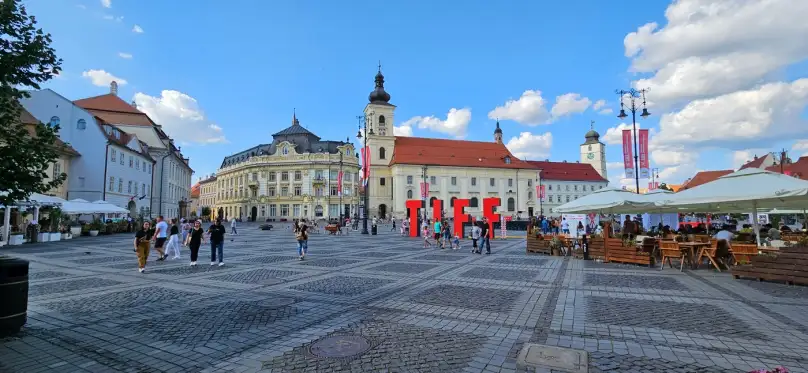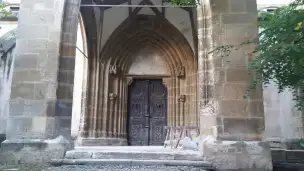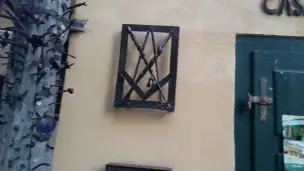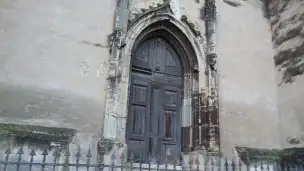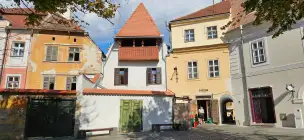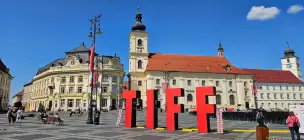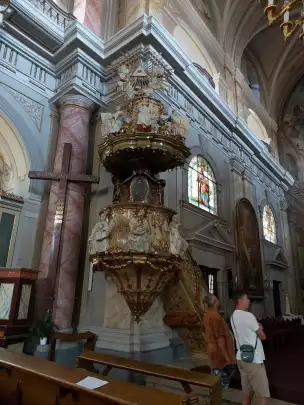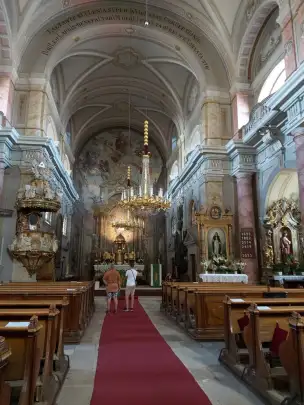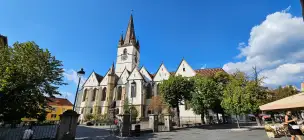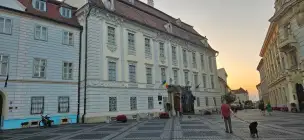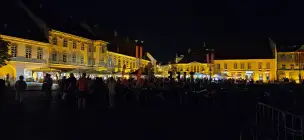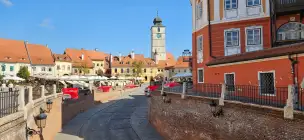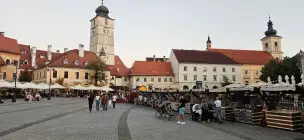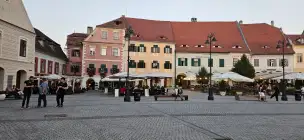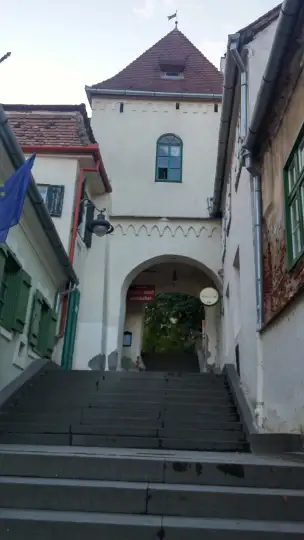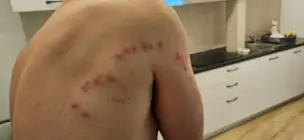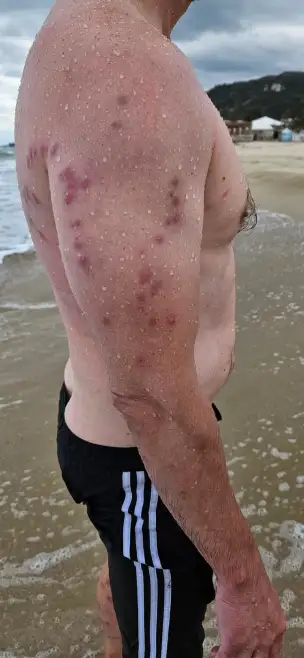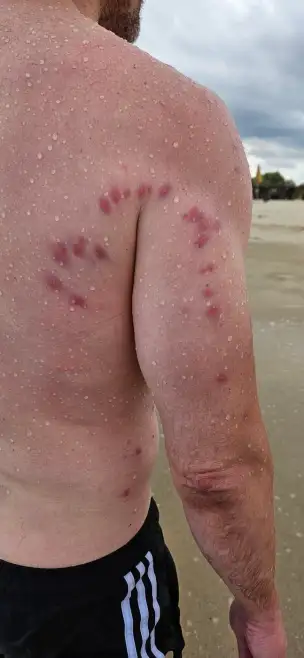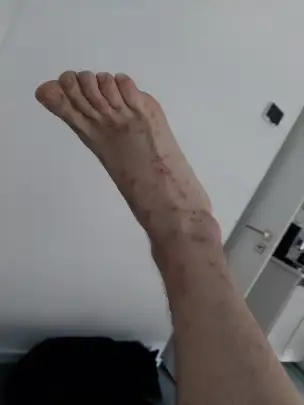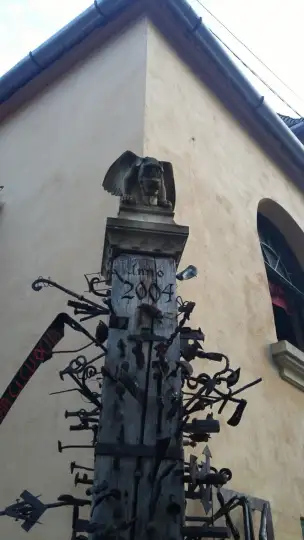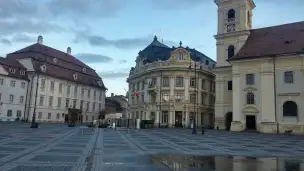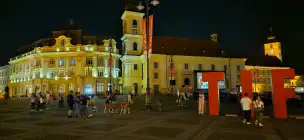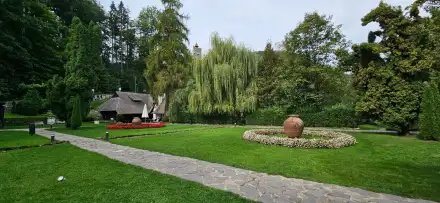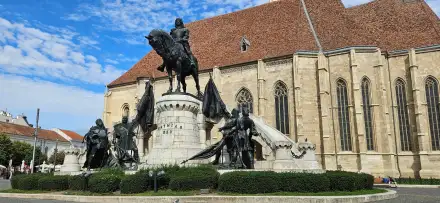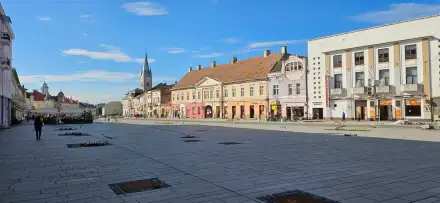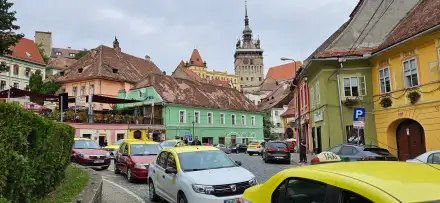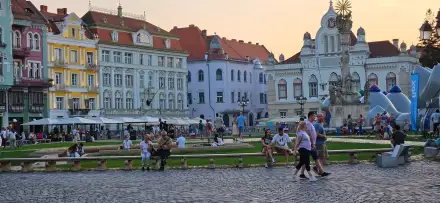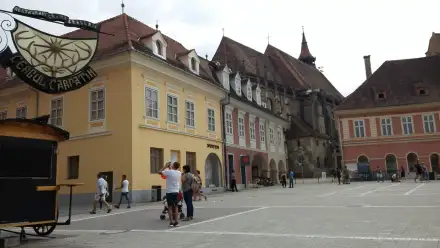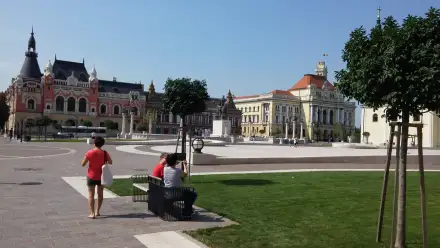Sibiu is a city in central Romania, located in the Făgăraș Mountains, on the Cibin River.
Sibiu turned out to be one of the greatest positive surprises of our travels, and for two reasons. The first was in contrast to nearby Brașov, about whose beauty I had heard so much from friends that I went there unnecessarily. The city turned out to be only moderately attractive, so our expectations for Sibiu were not particularly high.
The second reason was my superficial knowledge of the city, as we had often passed its outskirts on our way to Bulgaria or Greece. Back then, Sibiu seemed to me like a sad communist concrete jungle and the seat of the so-called Gypsy aristocracy, whose palaces were supposedly meant to resemble Snow White’s Disney castle but instead looked like something designed and built by experts in prefabricated blocks. Or perhaps they weren’t designed at all—just failed improvisations?
You can imagine my surprise when I saw the Old Town of Sibiu. It is not Brașov, but Sibiu that is the most beautiful city of the Transylvanian Saxons—not only in terms of quality but also in the scale of its historic center. Its tourist and gastronomic infrastructure also makes Sibiu stand out.
And now a few words about bedbugs. In the media we increasingly read that they are becoming a real plague all over Europe, including Poland. I had the misfortune of encountering them in Timișoara, but the final effects of the bites only appeared when we were on our way to Sibiu. So it was in this city that I first took steps to counter their effects.
The itching can be so strong at times that you start thinking about cutting off a limb. Forget about pharmacy creams like Fenistil and the like. What helped me was a strong eucalyptus cooling ointment bought at a gas station, and soaking my limbs in cold water.
While itchy and irritable, as I was passing by the Evangelical Cathedral of the Blessed Virgin Mary in Sibiu, I noticed a parish shop selling so-called holistic medicine.
One might think that in Transylvania this would mean mainly wooden stakes for piercing poor souls bitten by vampires—and I myself might have been taken for one: “Sir, that’s a vampire! A bloody huge bastard!”
But in my state I couldn’t afford to be picky. In an act of desperation, I went in and bought colloidal silver spray from a hunchbacked apothecary named Hans—effective both against vampires and for healing bedbug bites.
The effects may not have been miraculous, but after such bites you need to prepare yourself for 8–10 days of suffering. Colloidal silver significantly dries out the wounds and prevents them from festering.
It is one of the most beautiful and important cities in the country, with a rich history and cultural heritage.
Sibiu boasts numerous landmarks, including the Old Town with its stone townhouses and churches, the most notable being St. Michael’s Cathedral and the Evangelical Cathedral. Other tourist attractions include Brukenthal Castle, the History Museum, the Ethnographic Museum, and the Bridge of Lies.
Discover the best flights to Romania See current prices and promotions.
Check flights to Romania
Holy Trinity Church in Sibiu
The Jesuit Church (Romanian: Biserica Iezuiților), also known as the Holy Trinity Church (Romanian: Biserica Sfânta Treime), is located at Piața Mare 3 in Sibiu, Romania. It stands right next to the Brukenthal Palace and is one of the best-known Baroque churches in Transylvania.
The church is listed as a historic monument by Romania’s Ministry of Culture and Religious Affairs. In its choir sings Carmen Iohannis, the wife of President Klaus Iohannis.
Evangelical Cathedral of the Blessed Virgin Mary in Sibiu
The Sibiu Cathedral is a prime example of Gothic sacred architecture. It is characterized by its tall nave, ribbed vaulting, and numerous decorations and stained-glass windows. The interior is equally impressive, with many altars, sculptures, and organs.
The current asymmetry of the church’s structure is the result of reconstructions in the 15th and the first two decades of the 16th century. One of the cathedral’s most distinctive features is its clock tower (Turnul cu Ceas). At 73 meters, it is the tallest tower in Transylvania.
Samuel von Brukenthal Palace
The Brukenthal Palace in Avrig was built at the end of the 18th century by Governor Samuel von Brukenthal.
Its design was inspired by two European palaces: the Luxembourg Palace in Paris and Schönbrunn Palace in Vienna. The complex includes the main palace building, an orangery, and a summer garden.
Samuel von Brukenthal was an important and influential political figure in Transylvania, serving as governor for 13 years, when the principality was part of the Habsburg Empire under Maria Theresa.
Piața Mare (Great Square) in Sibiu
One of the three main squares around which the Old Town of Sibiu is built. For centuries, the Great Square has been the heart of city life, hosting markets, festivals, and even executions. The square is surrounded by historic landmarks, from the 13th-century Council Tower (Turnul Sfatului) to the Baroque Brukenthal Palace.
Council Tower – Turnul Sfatului – at the Small Square
Piața Mică (the Small Square), once a craftsmen’s market, is divided into two distinct parts by Ocnei Street, which runs under the Bridge of Lies toward the Lower Town. All the buildings in Piața Mică are recognized as historical monuments.
Built in the 12th century and rebuilt many times, the tower has served various roles over the centuries, including as a grain storehouse and a fire watchtower. The Council Tower in Sibiu is located between the two main squares of the historic center: the Great Square (Piața Mare) and the Small Square (Piața Mică).
Stairs Tower – Turnul Scărilor
The only one of the three surviving gates from the first fortification wall, dating back to the 13th century, making it one of the oldest preserved buildings in Sibiu. It connects the Upper and Lower Town.
Bedbug Bites
Although I was bitten by bedbugs in Timișoara, the delayed effects only appeared once I reached Sibiu, ruining about ten days of my life. I do not recommend it—beware.
Journeymen`s Column in Sibiu
A wooden post near the Journeymen’s House. According to custom, every journeyman leaving his apprenticeship had to leave a nail, a coin, or something belonging to him on the post.
Similar spiked columns can also be found in Vienna (near St. Stephen’s Cathedral), Bratislava, Budapest, and Timișoara.
Sibiu City Hall
The former building of the Land Credit Bank, built in 1906 on Piața Mare, has been the seat of the city government since 2006.
The building impresses with its unique Art Nouveau architecture. Its most interesting features are the stained-glass window on the main staircase, in the Art 1900 style, and the inner courtyard. If you visit the Great Square during City Hall’s opening hours, step inside to see the courtyard.



